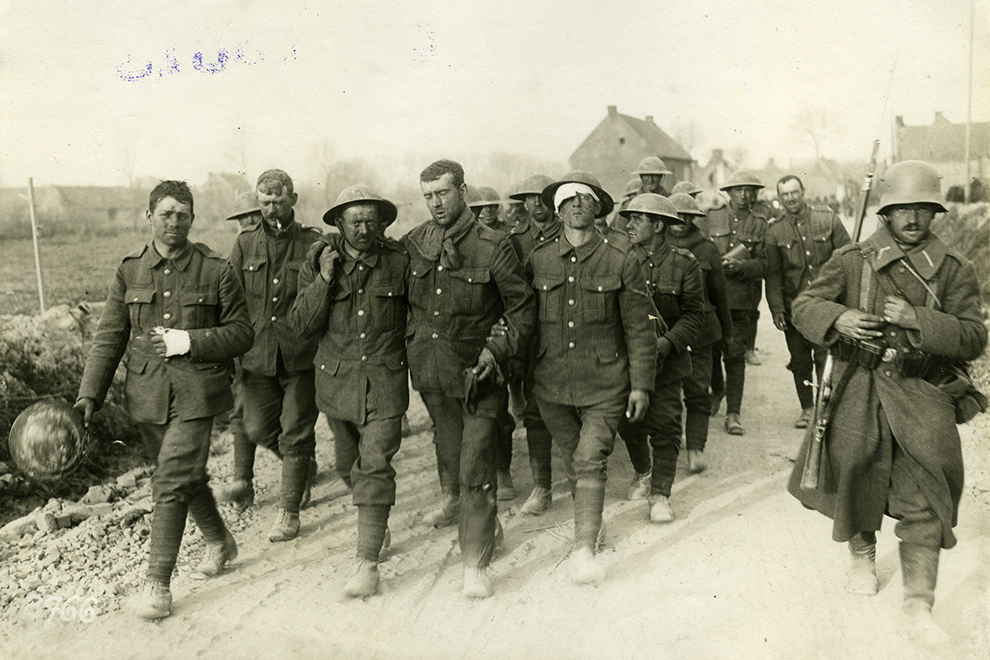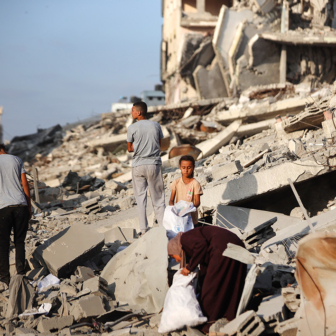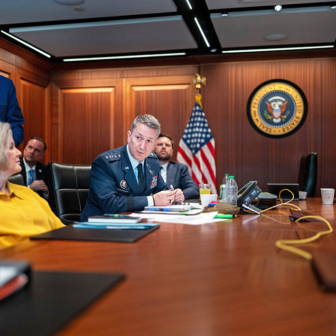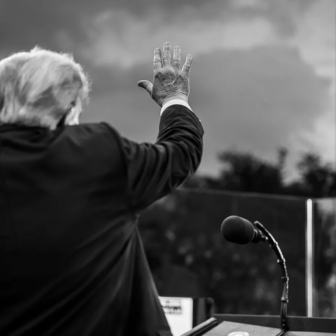As celebrations for the centenary of the first world war got under way in Australia, I arrived in Warsaw to find the streets laid-out with flowers. At first I assumed that Poland too was commemorating the Great War – though it wasn’t an independent country at the time – until I came across several bouquets set beneath a plaque on which all I could read was the year, 1944. The flowers marked the seventieth anniversary of the Warsaw Uprising.
This desperate act of Polish resistance to Nazi occupation began on 1 August 1944, as the Red army advanced on the city. The Soviet troops could have come to the aid of the Polish fighters; instead, Stalin ordered his men to put up camp on the outskirts of Warsaw, and they looked on from across the river as the Germans crushed the revolt, systematically destroying large swathes of the city in the process.
I arrived in Warsaw as tension over Ukraine continued to mount. Russia had responded to Western sanctions by banning agricultural imports from the European Union. The measure promised considerable hardship for Polish farmers, for whom Russia represents an important market. Yet the ban was met initially with good humour. The media appealed for people to go out and buy up fruit and vegetables. The humble apple became a symbol of defiance, and newspapers ran recipes using apples in every dish of a three-course meal. My hosts admitted that on hearing the announcement, they themselves had gone out and bought up a couple of sacks, and on the train back to Berlin I found a bag of apples they had slipped in with my packed lunch.
Anti-Russian sentiment can run high in Poland, my hosts explained to me. On the wall of their living room hang two portraits of one of the family grandfathers. The first shows him at the time of the first world war in the uniform of the Austro-Hungarian Imperial army. In the second portrait he wears the uniform of a captain of the Polish army. This photograph was taken shortly before the Soviet army took him out the back of a town called Katýn and shot him, along with some 20,000 Polish army and police officials and intellectuals. The Communists blamed the Nazis for this 1940 massacre, and that remained the official version of the event until the fall of the Berlin Wall.
As the repression of the Warsaw Uprising showed, the Germans were no less ruthless in their treatment of the Poles. Hitler saw their country as an obstacle to the Lebensraum that he sought for the German race. Himmler reflected this mindset in a speech to a group of military commanders in September 1944, as the Warsaw Uprising raged. He confided to his audience how he had described the unexpected surge of Polish resistance to the Führer as a “blessing.”
“We will overcome them in the next five to six weeks,” he said. “Then Warsaw, capital, head, nerve centre of this once sixteen- to seventeen-million-strong Polish people will be obliterated – this people who for 700 years, have blocked our way to the East and who, since the First Battle of Tannenberg, have always stood in the way. The Polish problem will no longer be a very great problem for us, or for our children and the generations to come.”
Himmler went on to boast that he had ordered “the total destruction of the city.” By the time the Nazis abandoned Warsaw, more than four-fifths of its buildings stood in ruins. Today the Uprising has come to signify something like a baptism of fire.
Much of this I learnt not in Warsaw but in Berlin, another city where the centenary of the first world war was no cause for celebration. In recognition of that fact, the Topography of Terror, a museum–monument built on the ruins of the Nazi state security complex, hosted an exhibition assembled by the Uprising Museum in Warsaw. On the day I visited, the site was teeming with people, young and old, locals and tourists, many of them visibly distressed by an exhibition that made no attempt to smooth over this chapter of German history.
The German Historical Museum, another popular tourist destination, also hosted an exhibition on the first world war, which was remarkable in its scope. By the time I came to the Gallipoli section, I had learnt how the Germans swiftly defeated the Russian army on the Eastern Front, and how the Germans violated Belgian neutrality and responded to popular resistance with a harshness that sickened the very officers who ordered the reprisals. I had also learnt how many Poles saw the war as an opportunity to regain their independence, and formed two battalions within the Russian army. There was no mention of the Austro-Hungarian Empire, however. The exhibition seemed so intent on painting the Germans as the aggressors that the Austro-Hungarian Empire was barely mentioned.
I happened to be standing in the Gallipoli section when a guide shepherded in a group of high school students. He began by explaining how Britain invaded Turkey in an attempt to break the stalemate on the Western Front, and then – having given the answer away – asked the group if any of them knew which side Turkey fought on. One of the students answered that the Turks fought with the Germans, and I snuck a glance over my shoulder to observe a note of surprise register on the faces of some of her classmates. I imagine that the students rarely hear the Turks spoken about as allies.
“Gallipoli was an embarrassing defeat for the British,” the guide continued, and he explained the malicious irony behind a medal, coined by the Germans in 1915, celebrating the British “victory” at Gallipoli. “But the most scandalous thing about the battle was that so many of the soldiers weren’t British but from Australia and New Zealand! They’d travelled by boat for six weeks to get there. See that hat over there, that sort of cowboy hat?” He pointed to a slouch hat hanging from the Gallipoli sign. “That’s an Australian soldier’s hat. Can any of you guess why there were Australian soldiers at Gallipoli?” The students murmured something about the British Empire. “Richtig!” he agreed enthusiastically. On further questioning another student volunteered that Turkey was called the Ottoman Empire back then, and the guide, evidently satisfied at having brought the discussion back to the imperial theme of the exhibition, moved on to discuss the Armenian genocide.
Not until I reached Paris did I find centenary commemorations akin to what I would have expected in Australia. I arrived in the city at the Gare de l’Est, the terminus of the French eastern railway network and an important site of the war. Photographs taken at the Gare on 2 August 1914 record the jubilation on the faces of the tens of thousands who gathered there in response to the call to arms. As well as the usual plaques and paintings memorialising the war, the grand halls of the station hosted a photographic exhibition portraying “Faces and Vestiges of the Great War.” Pictured alongside ghastly images of grenades and gasmasks were former combatants, flanked by wives and families, and images depicting them in service uniform. The centrepiece of the larger-than-life images showed an aged Moroccan man, a former soldier, proudly seated amidst the smiles of several younger generations of his family.
A gallery of one hundred photographic portraits on the footpath of the Champs Elysées also sought to bring the history of the war back to life. The exhibition, “Merci, for we could not let them die a second time,” reminded passers-by of the hundreds of thousands of men who came from all over the world to the battle- and homefront of France. There was one photo of ANZAC troops. The caption read: “More than 200,000 Australians and New Zealanders travelled 15,000 km by boat to fight in Europe. 55,000 of them would never return. For these two countries belonging to the Commonwealth, this sacrifice marked the founding act of their nations.” This text contains at least one historical error, for the British Commonwealth came into existence only in 1949.
The gallery portrayed a wealth of cultures. There were several photos of Algerian soldiers (“who earned an excellent reputation for courage, often refusing to be evacuated when they were injured”), Moroccans and Senegalese; a soldier from Guadeloupe, a French colony in the Caribbean, stood erect like the rifle in his hand. There were photos of Chinese and Indochinese soldiers, and Japanese nurses. A group of Scottish soldiers, dressed in kilts, performed a traditional dance in the grounds of a hospital. Russian soldiers disembarked in Marseille. Only one photo portrayed Germans, in a column of prisoners of war.
The message of cultural diversity may be an important one in France, where – if support for the Le Pen National Front party is any measure – intolerance is on the rise. But by presenting the war as a mosaic of individual stories, the Paris exhibitions risked effacing broader social aspects of the times, like the militarism and nationalism that fuelled and sustained the conflict. Likewise, the special place attributed to soldiers from former colonies seemed to me to smooth over much of the coarseness of colonial relationships. There was a stark reminder of this in the Berlin exhibition, which described skirmishes in German East Africa, from where a colonist sent a postcard home describing how “the Brits will soon unleash the Blacks onto us, but at least war gives you the chance to see whether you are still a man.”
When I visited the exhibition on the Champs Elysées, the tourists strolling in the glorious September weather rarely stopped to look back on the war. I thought of the exhibitions in Berlin, which even in late October were still crowded with visitors, among them student groups. When I was in Year 12 I studied the first world war, and I wonder how my appreciation of the history might have been enriched had I seen these exhibitions while preparing for my final exams. We subsidise student visits to the war memorial in Canberra; how impressive would it be if Australian students were able to carry out virtual tours of exhibitions in the different capitals of world?
The saying goes that history is written by the victors. But as the Berlin exhibitions showed – indeed, as the entire city of Berlin shows – sometimes the most thought-provoking history emerges from the bare bones of defeat. If Gallipoli too was an “embarrassing” defeat, what do Australians lose when they glorify the ANZAC legend? •




